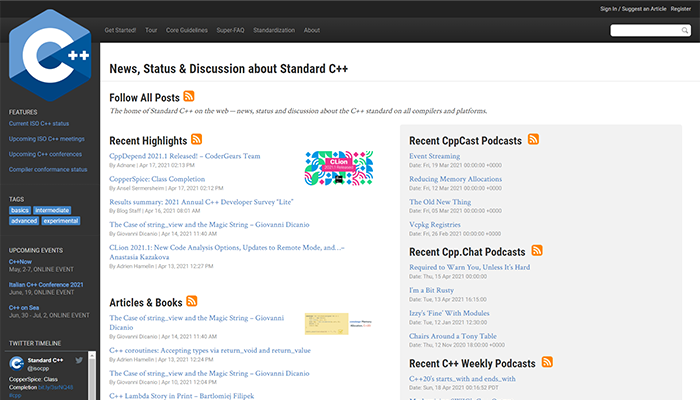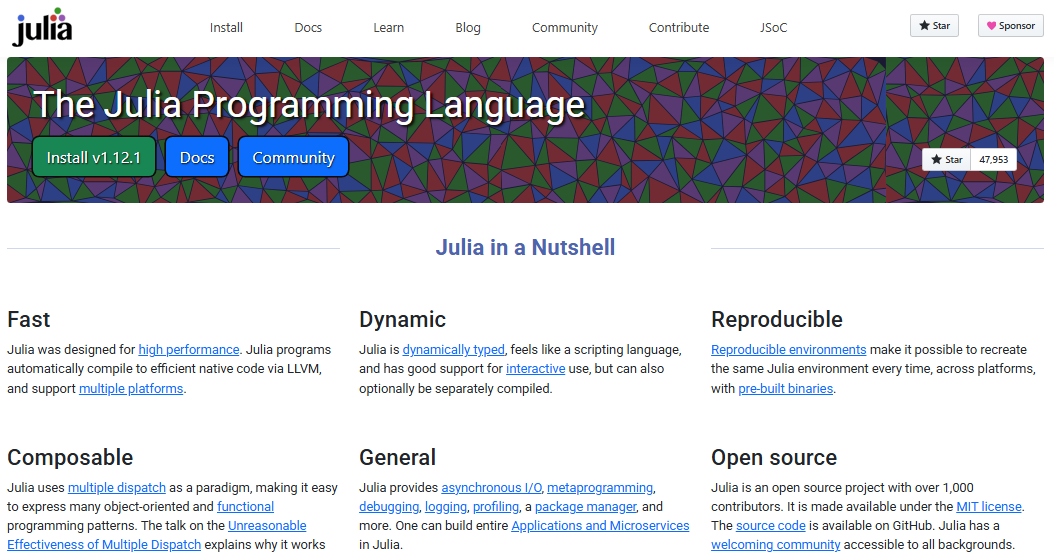Quick Summary :- Building AI solutions demands robust programming tools that enable machine learning, predictive analytics, and intelligent system development. This blog presents the top 7 programming solutions, detailing their advantages, practical use cases, and industry applications, helping developers and businesses make informed decisions when selecting the most effective tools for AI projects.
Artificial intelligence (AI) is revolutionizing the way businesses operate, enabling smarter decisions, automation, and predictive analytics. Organizations are investing heavily in AI to improve efficiency, reduce costs, and gain a competitive edge in their industries.
The global AI market is expected to reach around USD 3,680.47 billion by 2034, highlighting the technology’s rapid growth and adoption. From healthcare to finance, AI is becoming a critical driver of innovation and operational excellence worldwide.

Choosing the right programming tools is essential for AI development. Efficient tools streamline machine learning, data analysis, and intelligent system creation, ensuring faster deployment, scalability, and reliable performance across various real-world applications and industries.
6 Best AI Coding Languages in 2025
Here are the top 6 AI programming languages in 2025 that play a significant role in the development of AI tools.
1. Python

Python serves as the base language of several technologies and plays a special role in implementing AI apps. Introduced in 1991, Python today enjoys extensive community support. Python is the preferred choice of programming language for AI/ML services.
Merits of Python:
- One of the fastest-growing coding languages in the world, Python is easy to learn.
- It is still a readable language with impressive data visualization features.
- It is world-renowned for its versatility and simple syntax.
- Natural Language Processing, General AI, Neural Networks, and Sentimental Analysis is largely backed by Python Development Services.
- It also has applicability in the fields of analytics, statistics, and mathematics.
- It has a wide existing framework for Machine Learning and Deep Learning.
- Python offers multiple libraries including Pytorch, Pybrain, TensorFlow, Scikit-learn, Theano, Keras, and more.
What can you do with Python?
- Helpful in writing bot programs.
- With a strategic road-mapping method, Python helps to create dependable chatbots.
- Aids in designing interactive, modular, and dynamic codes.
2. Java

In the case of app development company, Java falls second to Python in the list of trending coding languages for AI-based tools. Java was at the forefront of AI and ML apps previously and is recently replaced by Python as the leading language for AI app building.
Merits of Java:
- Java is used with Search Algorithms, Neural Networks, and Natural Language Processing.
- Java can deliver promising results in the case of AI development of Next-Gen Apps.
- It offers easy debugging.
- Platform is independent.
- Java can support the development of AI apps for larger projects.
- It has an in-built garbage collector along with a good ability of graphical data representation.
- Extensive libraries available with Java include Apache Jena, Deep Java Library, TensorFlow, PowerLoom, Jenetics, Eye, d3web, Tweety, ApacheOpenNLP, etc.
- It is user-friendly and flexible.
What can you do with Java?
- Creating chatbots is easy with Java.
- WEKA is a Machine Learning Suite developed with Java, which facilitates companies with data mining, predictive analytics, and BI.
- AI-enabled Java-based games are also easy to create. One such example would be that of Robocode.
3. R

R is basically a statistical language created from Data Science and Deep Learning. It helps to design statistical apps and is highly suited for implementation in the field of business statistics.
It can be used to manipulate data to further generate statistical reports.
Here are some of its essential benefits:
- R, in combination with Python, can assist in the development of statistical apps.
- Generates valuable business insights with the help of AI.
- Utilized in Predictive Analysis, Statistical Computations, Numerical Analysis, Neural Networks, and Machine Learning.
- It is open-source and highly compatible with big data.
- The platform is independent and easy to integrate.
- It has several machine learning operations.
What can you do with R?
- R offers a strong package ecosystem for AI/ML development services like Carat, Random Forest, RPart, DataExplorer, MICE, Dplyr, etc.
- R sees major implementations in finance, eCommerce, banking, consulting, and healthcare.
4. C++

One of the fastest and oldest coding languages, C++ has been the 9th most preferred choice of developers for making AI apps. The development of AI and ML-based applications with C++ have covered a significant distance so far.
Merits of C++:
- Utilizes object-oriented characteristics.
- It is portable and scalable.
- Multi-Paradigm with memory management features.
- It enables faster code execution.
- Multiple libraries offered by C++ are Shark, Boost, Torch, TensorFlow Lite, and MLpack.
- Facilitates saving cost of JVM when developers are using an embedded development environment.
What can you do with C++?
- It is useful for coding resource-intensive applications.
- You can develop AI-enabled tools for healthcare, robots, speech recognition, games, and computer vision.
5. Lisp

The second oldest programming language after Fortran, Lisp was created in 1958 by John McCarthy. It was actively used in the 1980s by programmers. List Processing is otherwise known as Lisp. Lisp has laid the founding stones of AI long back.
Merits of Lisp:
- It is built as a mathematical notation for programs.
- It is enabled with a garbage collection feature.
- Is flexible and user friendly.
- It facilitates rapid prototyping.
- It is capable of dynamic object creation.
- It supports the implementation of software that can compute using symbols
- Lisp is a general-purpose but dynamically typed programming language.
What can you do with Lisp?
- Typical areas of implementation are planning systems, knowledge representation, machine translation, logic languages, rewrite systems, and more.
6. Julia

Julia is a high-performance, high-level programming language designed for numerical computing, data analysis, and AI development. It excels in handling large-scale computations and is increasingly popular in scientific and machine learning applications.
Merits of Julia:
- Optimized for high-speed mathematical and numerical operations.
- Great for machine learning, deep learning, and AI algorithms.
- Seamless integration with Python, R, C, and other languages.
- Open-source and highly scalable for big data applications.
- Offers easy-to-use syntax for scientific computing and statistical modeling.
- Supports parallel and distributed computing for large datasets.
What can you do with Julia?
- Julia provides strong packages for AI/ML such as Flux.jl, MLJ.jl, Knet.jl, and DataFrames.jl.
- It is widely used in finance, healthcare, scientific research, eCommerce, and engineering simulations.
7. Prolog

Prolog (Programming in Logic) is a high-level logic programming language widely used in AI for symbolic reasoning, knowledge representation, and rule-based systems. It’s ideal for developing expert systems, natural language processing, and AI problem-solving applications.
Merits of Prolog:
- Excels at symbolic reasoning, logical inference, and pattern matching.
- Ideal for AI applications like expert systems, chatbots, and natural language understanding.
- Supports declarative programming, making complex problem-solving easier.
- Open-source implementations available and easy to integrate with other systems.
- Efficient for solving puzzles, planning, and AI algorithms requiring backtracking.
- Strong for rule-based reasoning and knowledge representation.
What can you do with Prolog?
- Prolog is used in AI applications like medical diagnosis systems, robotics, intelligent tutoring, and decision-making engines.
- Popular in research, education, and industries requiring logical reasoning and problem-solving.
Key Areas of Artificial Intelligence Application
We may still not be in times where the implementation of AI is as advanced as depicted in the Avengers: Age of Ultron or The Matrix Trilogy; however, currently, we can see the following practical uses of AI in everyday life.
Speech recognition
STT(speech-to-text) is an AI technology that is the principal driving force behind the software, voice-controlled remotes, voice-enabled GPS, voice-driven virtual keyboards, and many other tools. STT helps in recognizing spoken words and transforms them into digitized texts.
Speech-to-Text, Speechnotes, ListNote are few examples of voice recognition software.
Also Read: AI Apps For Android
NLP ( Natural Language Processing)
NLP guides software apps and machines to comprehend, interpret, and generate human text. NLP utilizes sentimental analysis to identify mood, attitude, anger, etc.
Practical applications of NLP are Siri and Alexa.
Image recognition
Identification and classification of objects, people, written texts, and also actions fall under image recognition in AI. It is driven by deep neural networks.
Examples of image recognition include fingerprint ID systems, medical image analysis, self-driving cars, etc.
Autopilot mode
Although, this has been in use for quite a long time in flying passenger and air force aircrafts. In modern times, autopilot utilizes a combination of GPS, sensors, image recognition, collision avoidance technology, robotics, and NLP.
Robots for house cleaning
Starting from vacuum cleaning floors to mopping floors while avoiding hurdles on the path, taking the most effective route of cleaning, and determining the area of the room is what AI-enabled house cleaning robots can do in today’s time.
An example under this category would include iRobot’s Roomba vacuum.
Product recommendations
eCommerce websites utilize neural networks for recommending products to users based on their previous purchase activities, geography, time, weather, and various other factors. Such real-time recommendations can boost sales..
Amazon & eBay largely rely on this method of sales.
Virus & spam protection
Antivirus and spam tools employ deep neural networks to identify and render new viruses ineffective.
Norton, Mcafee and many other antivirus applications utilize AI-based virus detection methods.
Automatic stock trading
AI can help automate stock trading to optimise stock portfolios. It can particularly be useful in day trading.
Some of the popular AI-enabled stock trading apps are TrendSpider, Trade ideas, EquBot, Blackboxstocks, etc.
Ride-sharing services
The cab service providers use AI to calculate the ETA, connect passengers with the nearest driver, and do a lot more.
Examples of ride-sharing services include Uber, Lyft, Ola, etc.
Also Read: Things to Know About Node JS Stream In Detail
Concluding Lines
So, artificial intelligence is already set to become a dominating factor in the world of information & technology, mathematics, computer science, psychology, linguistics, philosophy, medical science, and many more.
Thus, a lot of advancement is happening around it and the best AI programming languages that can be used for building AI apps have been discussed above. So, you can use a AI coding language of your choice to build AI apps in 2025.
-
What are AI programming languages used for?
They are used to build machine learning models, predictive analytics, neural networks, and intelligent systems for various industries.
-
Which industries benefit the most from AI programming tools?
Healthcare, finance, eCommerce, consulting, and autonomous systems heavily rely on AI programming tools for efficiency and innovation.
-
Are AI programming languages difficult to learn?
Some are beginner-friendly like Python, while others like Prolog or Julia may require prior programming knowledge or statistical understanding.
-
Can AI programming languages handle big data?
Yes, modern AI tools are designed for big data processing, data manipulation, and real-time analytics efficiently.
-
How do I choose the right AI programming tool?
Consider your project goals, application type, scalability requirements, community support, and the tool’s strengths in machine learning or statistical analysis.



